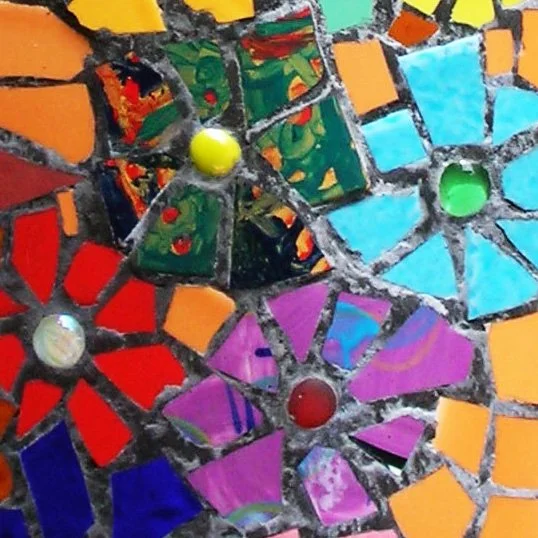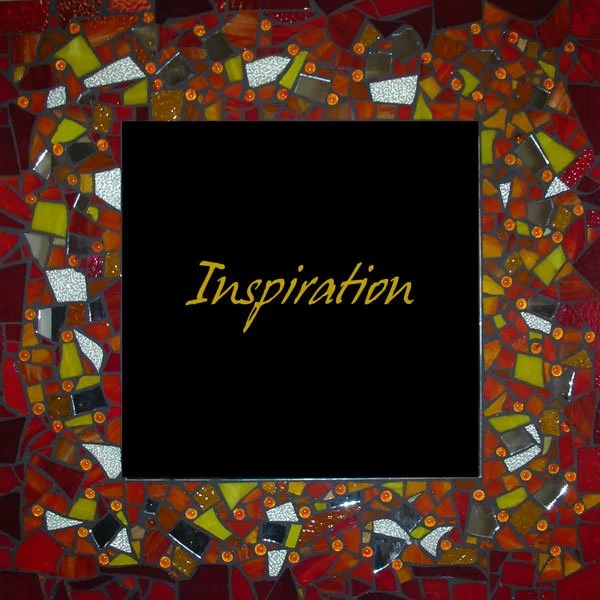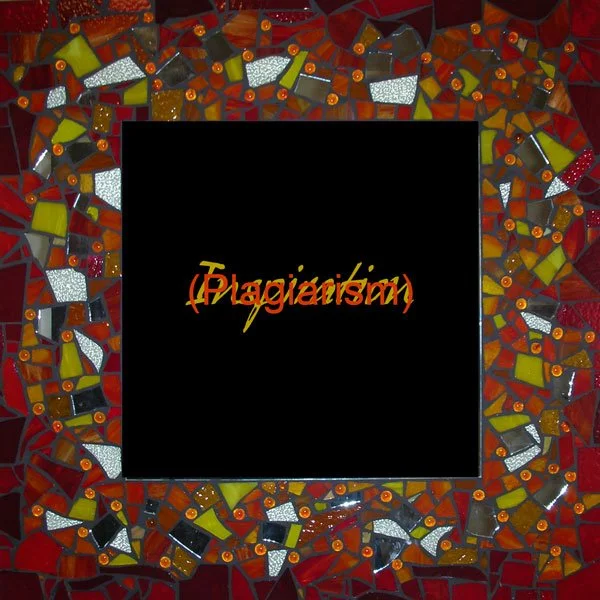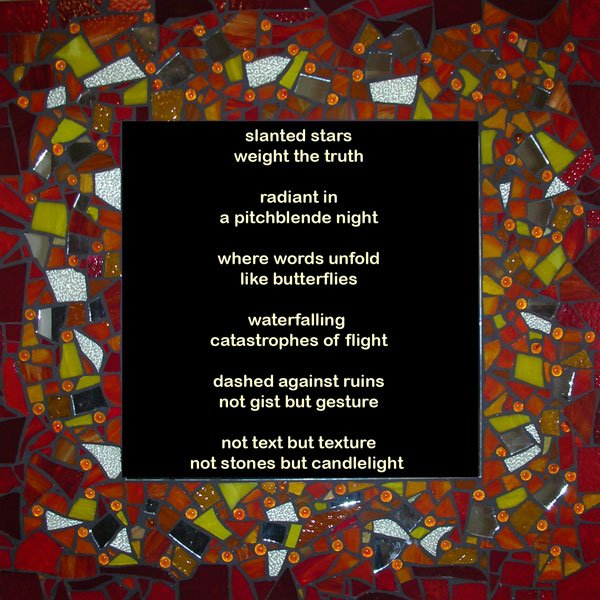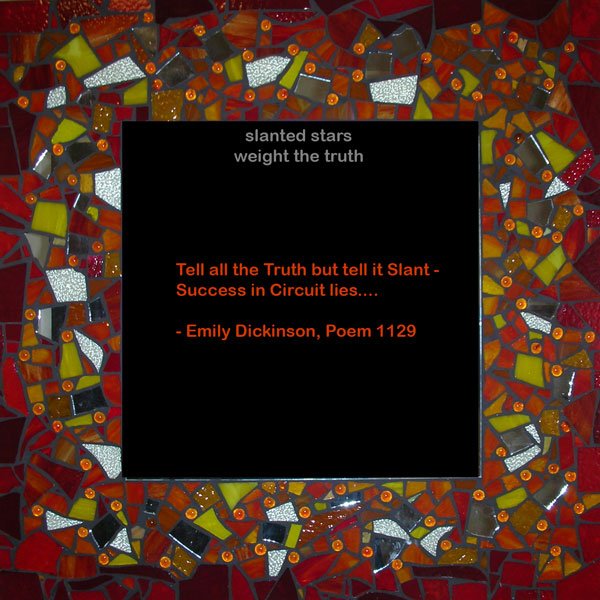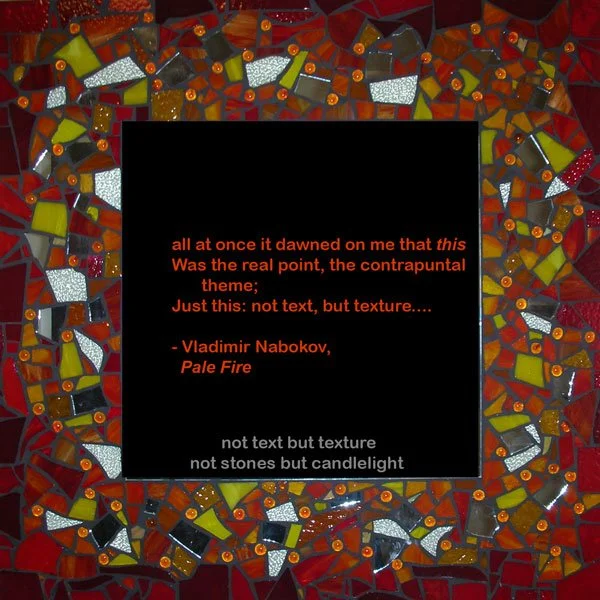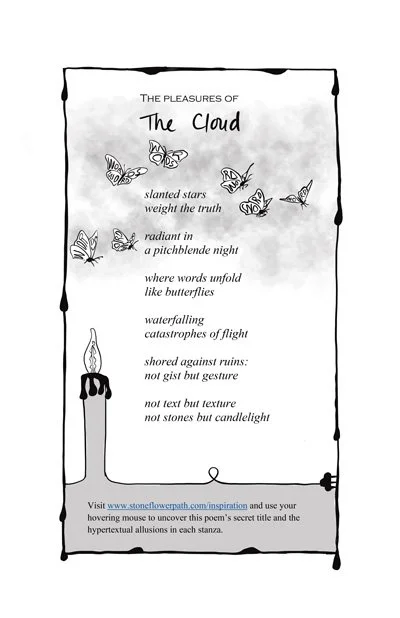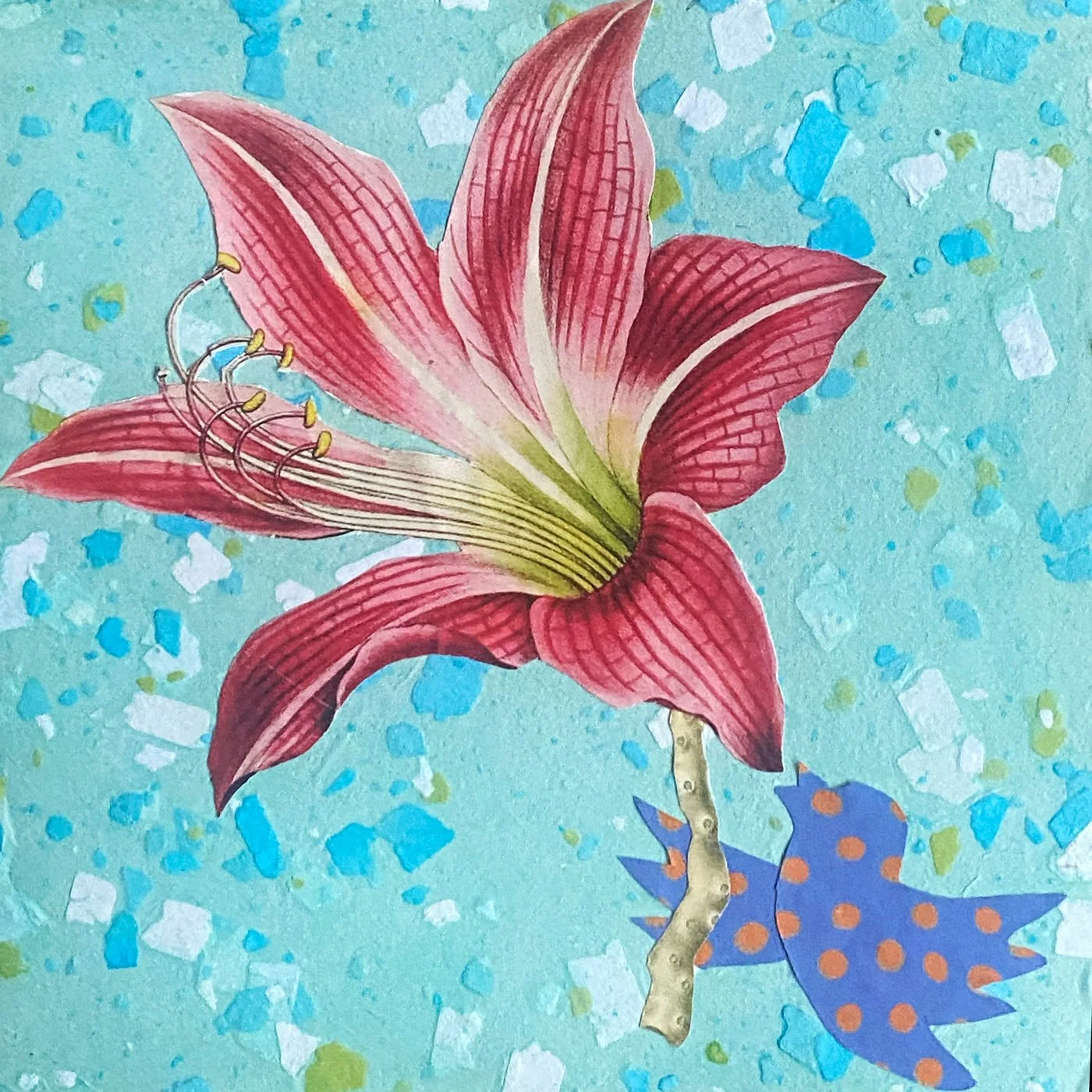Lately I've been revisiting some overgrown pathways in my digital archive, cutting back the brambles and sweeping away dead leaves to reveal the moss-covered mosaics underneath.
One such recently excavated artifact is The Stoneflower Path, a digital poetry website that I built in the heyday of hypermedia hype (c. 2007-2010) using Dreamweaver, Photoshop, and Flash. Last year, summer scholar Amy Lewis spent the better part of two months pruning away dead links and converting the Flash files to html5 so that the site is now navigable again.
I've also unearthed an in-depth interview about my digital poetics conducted by poet and book reviewer Paula Green back in 2011. There I explicate some of my favorite digipoems, such as this one:
In Inspiration, I use mouse-overs to subvert my readers' expectations and to raise questions about the relationship between process and product. The poem is contained within a mosaic frame, a digitized version of an actual mosaic mirror that hangs in my house. Both images (mosaic and frame) have a powerful metaphorical function in the poem, with its themes of fragmentation and reframing.
As you move your mouse around inside the mirror frame, searching for a way into the poem, you'll discover that when you pass over the title, the word "Plagiarism" pops up in front of it. That's the poem’s secret title, the counterpart to "Inspiration." All poets are plagiarists, in a sense, drawing their ideas and vocabulary from those who have gone before them. My digipoem merely makes that process more transparent.
When you click in the centre of the mirror, you're granted access to the poem, and the full text appears. It's a meta-poem, a poem about poetry, exploring how language can both trip us up and set us free: "words unfold / like butterflies" even as they "weight the truth."
Making your way through the poem with mouse in hand, you soon discover that behind or within each stanza lies a hidden intertext. For example, when you mouse over the opening stanza – "slanted stars / weight the truth"– up pops the line from Emily Dickinson that in turn inspired mine: "tell all the truth but tell it slant." Additional fragments of poetry are hidden behind the shards of glass and glowing jewels the mirror's frame.
Further down, when you mouse over "not text but texture" in the final stanza, you're treated to a quote from Vladimir Nabokov’s novel Pale Fire: "this / Was the real point, the contrapuntal theme; / Just this, not text, but texture..." For me, Nabokov's line sums up not only this particular poem but my digital poetics in general – indeed, my entire creative process. A digital poem can never consist of text alone. Its meaning also resides in the mosaic frame itself, the mirror, the mouse-overs, the way you read it – not text, but texture.
Barely a dozen years after I created the Stoneflower Path, many of my digipoems already feel clunky and old-fashioned, like walking into your grandma's living room to find the same furniture that was there in your parents' childhood. Conceived before the rise of touchscreens and tablets, these poems work best when viewed on a good-sized computer monitor as you search for hyperlinks and hotspots with mouse in hand.
But I still remember the joy that I had in creating them, with their giddy interplay of digital disembodiment and material texture, and I've been having fun reappropriating them for different contexts. For example, several Stoneflower Path poems appear as static printed texts in my new book, Writing with Pleasure, accompanied by fanciful line drawings by illustrator Selina Tusitala Marsh.
I absolutely love Selina's artwork for this poem! The butterflies literally bear words on their wings; the minaret-like candle, like my computer, is powered by an electrical cord plugged into the wall; and the hand-drawn border that frames the image drips with melted wax.
Inspiration, or plagiarism? As whizzy new AI tools such as ChatGPT remind us, all writing – indeed, language itself – has been pieced together from shards of past expression and grouted in place by algorithms: "these fragments I have shored against my ruins," in T. S. Eliot's words.
There's much more material-digital wordplay to be explored along the Stoneflower Path, so I'll revisit my digital poetry archive from time to time in search of old/new insights. I'd love to see you there!
This post was originally published on my free Substack newsletter, Helen’s Word. Subscribe here to access my full Substack archive and get weekly writing-related news and inspiration delivered straight to your inbox.
WriteSPACE members enjoy a complimentary subscription to Helen’s Word as part of their membership, which costs just USD $12.50 per month on the annual plan. Not a member? Sign up now for a free 30-day trial!



